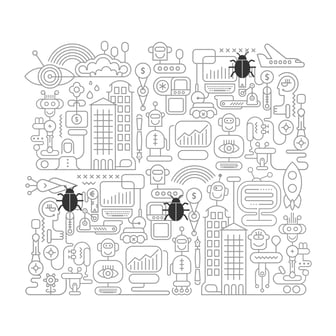Cybercriminals are starting to behave like corporations and it’s not that surprising, considering cybercrime is a multi-billion dollar industry.
Hackers producing malware like trojans, ransomware and spyware don’t usually run solo scams anymore; they set up an online shopfront and lease their products to anybody who wants to use them.
This corporatisation tells us a lot about the rapid transformation that cybercrime is going through. The days of random attacks by amateur operators is over: contemporary hackers behave like entrepreneurs. There’s big money to be made in cybercrime and that’s reflected in its new industrial format.
MaaS
Criminals looking to run a virus attack don’t need to write or download code anymore, they just get a subscription to a cloud-based package. It’s called Malware as a Service (MaaS); a convenient, user-friendly way to run a scam, based on the SaaS business model that’s worked so well for products like Office 365, Salesforce and G Suite.
In a 2017 article published by IBM’s Security Intelligence blog, cybercrime expert Scott Koegler said:
“Readily available cybercrime tools enable less dedicated - and presumably less skilled - fraudsters to launch their own cyber invasions. Many of these tools can be found through basic searches, while others are available only in private networks and on the Dark Web. Cybercriminals use malicious tools to break into shared servers. Once they have control of a server, they execute scripts to install full libraries, then run the programs automatically to either search randomly or attack specific networks. Once a set of tools has been installed on a server and advertised for use, the process can be duplicated, put on other servers and quickly spread…”
According to Koegler, the range of malware available to criminals in MaaS format includes:
- Network mapping tools designed to search networks looking for open ports and devices.
- Web vulnerability scanners that find flaws in websites that will allow unauthorized access to the server.
- Password crackers for breaking into networks and data storage.
In his article, Koegler states that using these sort of MaaS cybercrime products “takes a little education but no programming,” and that they “can be scripted to create customized tools.”
Koegler warns that “the list of malicious tools available to would-be cybercriminals is growing, and the techniques are becoming more sophisticated.”

Retail Malware
When a scammer sets up a crime operation nowadays, they can get all the malware tools they need through easy-access portals that look a lot like the websites of conventional software companies.
Hackers making malware have recognised the huge market opportunity that’s available to them and they’re trying to make their viruses and spyware as user-friendly as possible.
Ironically, malware producers want to create a trustworthy reputation for their products so they can reach a bigger market. Scammers can buy malware now that comes with user-testimonials and 24-hour helpdesk support.
The nett result of this mass-market commodification of malware is the surge in cybercrime statistics we’ve been seeing in recent years.
The FBI monitors cybercrime activity closely and their data demonstrates a steep upward trend in attacks. Cybersecurity experts estimating the potential cost of cybercrime in 2018 have arrived at figures in excess of US$12 billion dollars.
Defensive Tactics
As the availability of retail malware grows, and the skill level required to run scams decreases cybercrime statistics will continue to surge upward.
The mass-market commodification of malware is pushing us into a new era of cybercrime. It’s not hackers attacking us anymore, it’s syndicates; legions of criminals using well-designed, brutally effective tools that are easy to obtain and require little expertise to use.
In a recent article, MailGuard CEO and cybersecurity author Craig McDonald stated:
“To successfully confront the new wave of cybercrime we have to use every resource available to us because that’s exactly what cybercriminals are doing. One means of defence just isn’t enough… We have to close the gap between the sophistication of cybercriminals and the approach we take confronting them. It’s not enough to understand the threat, we have to understand our opponents. The cybercriminals seeking to attack us are versatile, creative and unscrupulous. We need to place multiple barriers in their way because it’s hard to predict the shape of their next attack… Simply running an occasional virus scan on your laptop doesn’t cut it anymore - it’s like defending yourself from terrorism by keeping a baseball bat under your bed.”
Stay up-to-date with new posts on the MailGuard Blog by subscribing to free updates. Click on the button below:







